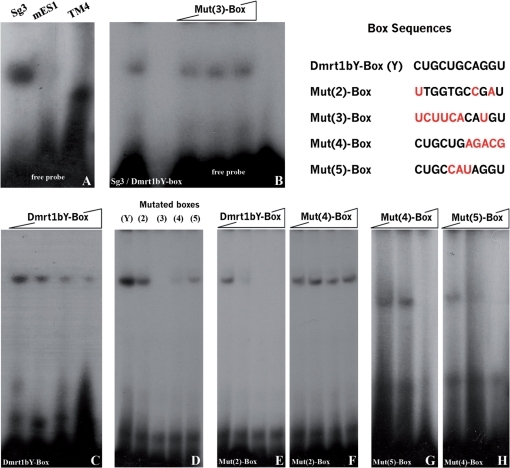Figure 4.
A RNA-binding factor that recognizes the Box could be responsible for primordial gonad restricted stability. (A) Electrophoretic Mobility Shift Assay (EMSA) using cell extracts from three different cell lines (i) a medaka spermatogonial cell line (Sg3), (ii) a medaka embryonic stem cell line (MES-1) and (iii) a mouse sertoli cell line (TM4) and the 11-mer box as a probe shows shift for Sg3 and TM4 cells. (B) A mutated version of the box [Mut(3)-Box] used as competitor (1–1, 1–5 and 1–10 ratios) did not interfere significantly with the binding, indicating the specificity of the binding. (C) As control, using the spermatogonial cell line, competition of radioactively and non-radioactively labeled box probes resulted in progressive loss of the apparent shift (1–1, 1–5 and 1–10 ratios). (D) Different mutated versions of the box [Mut(2–5)-Box] were then tested for binding, and resulted in apparent different binding affinities. (E–H) Relative robustness of the shift was then tested by mean of competition assays among the different mutated versions of the box (E: 1–1, 1–5 and 1–10; F: 1–1, 1–2 and 1–5; G and H: 1–1 and 1–5 ratios).

